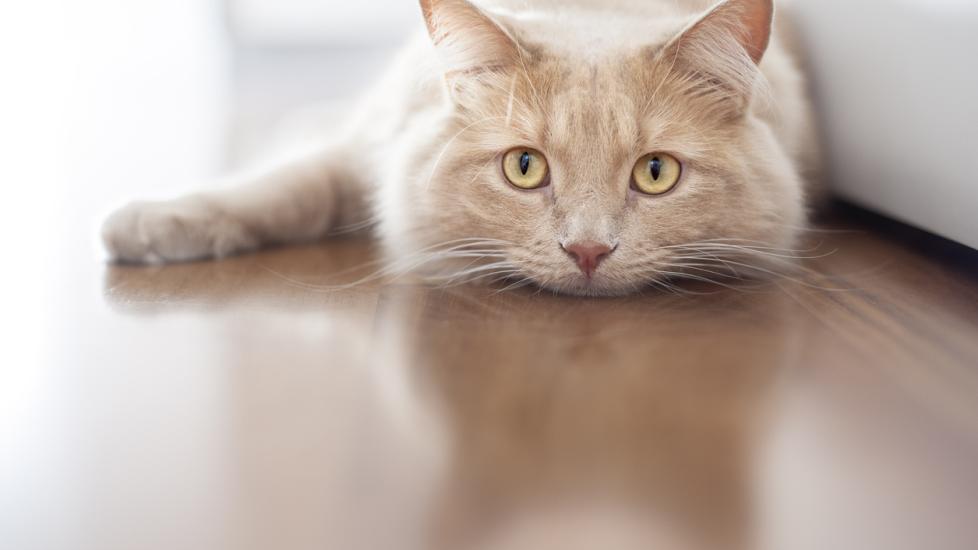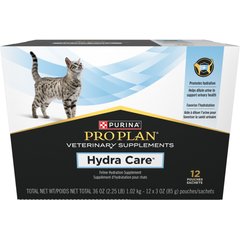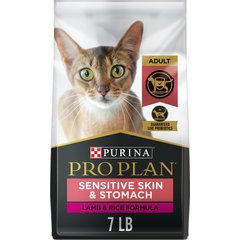Calicivirus in Cats
What Is Calicivirus in Cats?
Feline calicivirus (FCV) is a viral pathogen that causes upper respiratory tract infection in cats. Infection most commonly resembles a cold, but severe infections involving the lungs, joints, and/or other organs can occur.
The virus is most commonly found in facilities that house multiple cats, such as rescues, shelters, or breeding facilities. Yet it can spread readily in households with only a few cats. Kittens and young adult cats are usually at the highest risk for infection, but a cat of any age can be affected.
Vet Recommended Health Support
- Feliway Optimum Enhanced Calming 30 Day Diffuser for Cats$29.99Chewy Price
- Purina Pro Plan Veterinary Diets FortiFlora Powder Probiotic Digestive Supplement for Cats, 30 count$30.99Chewy Price
- Purina Pro Plan Veterinary Diets Hydra Care Liver Flavored Liquid Supplement for Cats, 3-oz pouch, case of 12$14.99Chewy Price
- Purina Pro Plan Adult Sensitive Skin & Stomach Lamb & Rice Formula Dry Cat Food, 7-lb bag$28.08Chewy Price
Symptoms of Calicivirus in Cats
Some cats become infected and do not show any clinical signs. If there are signs, they can range from mild to severe, with severe signs resulting in death. The most common signs are:
-
Sneezing
-
Nasal discharge
-
Ulceration of the surface of the nose (skin broken open)
-
Eye discharge
An affected cat may also develop the following:
-
Ulcers on the lip, tongue, or elsewhere in the mouth, often accompanied by drooling
-
Fever
-
Lethargy
-
Dehydration
-
Poor appetite due to severe nasal congestion and/or oral ulcerations
The following signs are associated with more severe cases:
-
Pneumonia, with a cough or difficulty breathing
-
Joint inflammation, which causes limping or swelling in the affected joint(s)
-
Signs related to blood vessel wall inflammation (vasculitis), which can lead to multi-organ failure and death, including:
-
Swelling in the face/legs
-
Skin wounds
-
Bloody nose
-
Bloody stool
-
Causes of Calicivirus in Cats
FCV is shed in secretions from the nose, mouth, and eyes. A cat can become infected by contact with secretions containing the virus directly from another cat or indirectly via contact with an object (carrier, food/water bowl, surface) that has been contaminated with infective secretions.
Once inside the body, FCV invades the cells of the nose, throat, mouth, and tonsils. More aggressive strains of FCV can invade the lungs, joints, and kidneys. Signs of illness usually develop 2-6 days after exposure to the virus.
There are multiple strains of FCV, and sometimes more than one strain may be infecting cats in the same environment. FCV can mutate to a new strain within a cat’s body. There are differences in virulence or disease-causing ability between strains, from mild to severe.
How Veterinarians Diagnose Calicivirus in Cats
-
Lab work, such as a complete blood count (CBC) and chemistry, will not directly test for FCV but may be helpful in determining if there is concurrent illness.
-
Chest radiographs may be recommended if a cat presents with a history of cough, but the findings will not be specific for FCV. Pneumonia can be diagnosed with chest X-rays.
-
Blood tests that measure FCV antibody levels (titers) can be performed, but a positive or elevated titer can happen with both natural exposure and vaccination. It’s impossible to determine the difference using this test alone.
-
A polymerase chain reaction assay (PCR) can be performed using swabs from the nose, the inside of the eyelids, and/or the mouth. PCR testing can also be performed on blood, feces, and urine early in the disease process.
Keep in mind that a large percentage of healthy cats are long-term carriers of FCV. So just because you find FCV on the test does not mean it is necessarily causing the clinical signs.
Treatment of Calicivirus in Cats
Supportive care is the gold standard of treatment for cats affected with FCV.
-
Place your cat in a warm, steamy bathroom for 10-15 minutes twice daily to help reduce nasal congestion.
-
Nutrition is important because an affected cat with oral ulcerations and nasal congestion may not want to eat. Offer a variety of very strong-smelling foods. Canned food warmed up slightly may be more enticing than cold canned food or dry food.
-
Use warm wet cloths to clean away eye and nose discharge. When cats are not feeling well, they do not want to groom, especially if they also have oral ulcers.
Antiviral medication is not commonly used in the treatment of FCV, though some medications may be useful:
-
Pain medication is given to cats with oral/nasal ulcerations to provide comfort.
-
An oral antibiotic can be used to treat secondary infections (nose, lungs, mouth).
-
Topical eye antibiotic medication will be prescribed for cats with eye infections.
-
Oral nonsteroidal anti-inflammatory medication may be used to reduce inflammation and fever.
-
Intravenous or subcutaneous fluids may be indicated if a cat is dehydrated. IV fluids can also help in fever reduction.
Recovery and Management of Calicivirus in Cats
Most cats will recover from FCV in 7-10 days. But they can become carriers and shed virus from oral and nasal secretions long term. Cats that become chronic carriers may develop oral inflammation (gingivitis/stomatitis) and be at increased risk for growths in the nose, mouth, or ear (nasopharyngeal or aural polyps).
Vaccination can help prevent the spread of FCV. A vaccinated cat can still become infected with FCV but not develop any clinical signs or may have mild signs compared to unvaccinated cats.
-
Kittens usually get the first dose of vaccine at 9 weeks of age, followed by boosters at 12 weeks and 15-16 weeks.
-
The vaccine is then boosted at 1 year of age and every 1–3 years after that, depending on the form of vaccine used.
-
FCV will commonly be given in a combination vaccine called the feline distemper vaccine.
FCV is highly contagious, so it is important to isolate the affected cat, either in a bathroom or bedroom, to avoid exposure. Remember that you can spread the virus to unaffected cats after contact with your infected cat if you do not wash your hands or change your clothes after interaction.
All materials that have come in contact with the infected cat need to be thoroughly washed. The virus can live in the environment on surfaces for 1-4 weeks and is not killed by regular cleaners. Bleach solution at 1 part bleach to 32 parts water can be used to wipe down surfaces and clean materials like bedding, litter boxes, and food and water bowls.
Calicivirus in Cats FAQs
Is calicivirus contagious to humans?
No, FCV is not infective to humans.
Is calicivirus contagious to other pets in the household?
It is only contagious to other cats.
How long do cats live with calicivirus?
Some cats can become lifelong carriers of FCV.
Can dogs get calicivirus from cats?
No, only cats can become infected with FCV.
References
Veterinary Information Network Vincyclopedia of Diseases. “Feline Calicivirus Infection.” Contributors: Jacqueline Brister, DVM (revised on 12/9/2019) and Kari Rothrock, DVM (original author 5/25/2012).
Featured Image: iStock.com/Stegarau




